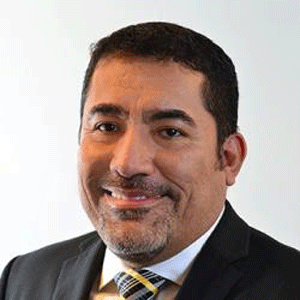THANK YOU FOR SUBSCRIBING

Why Should Companies Embrace Coaching Culture In The Workplace?
Emily Orcullo, Director Apac & China Customer Logistics, The Lego Group

For more than two decades now working in the supply chain industry, I have seen the two sides of the leadership coin. On one side, the leadership style is directive, oftentimes topdown in the mandate. I have seen this work best when immediate results are needed especially when faced with a crisis. The other one is non- directive, dialogueoriented, and more open to creative possibilities. The latter in my experience is much more relationship invested, will require patience (vs. quick results) but, has the most impact in driving employee motivation & satisfaction. As a people leader, I have noticed myself assume both styles. I use my situational judgment when to be directive and when to be otherwise. However, with the boom of millennial talents, the current workforce is craving for their voices to be heard, to be empowered to get things done, to be more experimental and if any, disrupt status quo. This has put to test old leadership models and has challenged legacy leadership styles.
Having managed different teams now and having observed different people leaders, I believe what has worked well is quite different from the early role models I have experienced. To drive sustainable highperformance, leadership focus needs to start with people first, enabling their transformation which eventually leads to business growth. I believe that any people leader should have the ability to inspire the future, encourage discovery (their inner selves and their external environment), embrace the diversity of thinking, and empower people to find their ways and means to solve a problem. In essence, the role of a leader is nothing more than a coach.
What is Coaching? The world's leading institution on coaching, ICF, has defined coaching as partnering with clients in a thoughtprovoking and creative process that inspires them to maximize their personal and professional potential. This means a coach is a facilitator of change. The coach helps a person on a journey of self-awareness enabling the realization of what are the interventions needed to achieve the goal/s identified so that, the transformation will be realized.
Why a Coaching Culture, Now?
"Culture eats strategy for breakfast", is a famous quote from the renowned management consultant, Peter Drucker. What it means is, no matter how strong your business strategy is, success still depends on how the organization behaves and what they adhere to as values and beliefs. The coaching mindset is one of the important elements that can be embedded in any organizational culture as it opens up honest communication, allows for discovery, and can clear away the clutter of thoughts that could hinder high performance.
According to the white paper presented by Douglas Riddle from the Center for Creative Leadership, "Coaching culture is not just doing coaching. It's having the conversations that may not usually happen across functions, across levels to make sure that we understand and can act in ways that amplify collaboration, agreement, and alignment."
I can resonate with this. The magic happens when the organization applies coaching principles and conversational tools to provide support and inspire more creative thinking. It is not always about having a coaching session inside a room but it is, applying coaching conversations in the day-to-day interaction.
Consider these moments to bring coaching to life at the workplace:
1. Deliver commitments. We are all accountable to deliver target results and it is not all the time we can deliver. In our day-to-day reality, we experience challenges that prevent us in achieving our goals. The COVID-19 pandemic, the shipping freight reliability issues happening globally, and other disruptions like extreme weather conditions have greatly impacted our commitment to deliver goods on time and in full to our customers. Most often, we find ourselves stressed in not meeting expectations, but it is also important to acknowledge what is and what is not in our sphere of control. Frustrating as it may seem, here is where a coaching conversation will help. Why not open up a dialogue and re-examine the goal versus current reality, what options are possible, and what can be done moving forward. I find using the Goal-Reality-OptionsWill (GROW) model (from Myles Downey) a simple and practical framework in coaching for performance. Ask questions like, “What have you learned?”, “What part of the situation have you not explored yet?” and eventually, “What can be done?”. From experience, a coaching conversation with your direct report allows for more creative thinking and accountability.
To Drive Sustainable High Performance, Leadership Focus Needs To Start With People First, Enabling Their Transformation Which Eventually Leads To Business Growth
2. Career development conversations. By far, this is where I spend the most time using my coaching hat. Here, it is important to anchor the conversation to support the employee's aspirations both in their personal and professional lives. From my experience, what has worked best is to spend time understanding what is the employee's end in mind? Between the ideal self and the current self, what are the opportunities, and eventually, what is the development roadmap? It is important to take note that different people have different needs in their lives and different levels of self-awareness.
Sometimes, the employee may not see what is ahead and this is ok acknowledging that we all need space and time to figure what we want. This requires a lot of active listening, understanding beyond what is verbally heard. The key to a successful conversation is to create a safe space for people to express themselves and give time for introspection before detailing any development plan. This also means that this is a going dialogue and not a once-a-year exercise to fulfil any HR requirement. The outcome of the coaching conversation should manifest that the employee is the "creator" and the "driver" of the plan. The role of the people leader (the coach) is to ask the right questions to help the employee realize his/her full potential.
3. Managing stakeholders up and across. Most often, we assume what people want or what they need based on our judgment and/or perception. How many times have you asked your stakeholder/s what do they really want without fear of being judged? In my view, managing any stakeholder is very much like the partnering conversation in a coaching process. Partnering mindset means, empowering the client/customer/stakeholder to have the choice of what happens next. For example, do not assume that what you give as an update is what the stakeholder wants or needs to receive. For example, in managing projects, I've often seen that managers would update based on the tasks due but may not.












